Growing a fig tree from a cutting is a rewarding experience that allows you to propagate and share a beloved fruit tree. It’s a simple process that can be done with a few basic tools and some patience. In this article, I will guide you through the step-by-step process of How to Grow a Fig Tree from a Cutting.
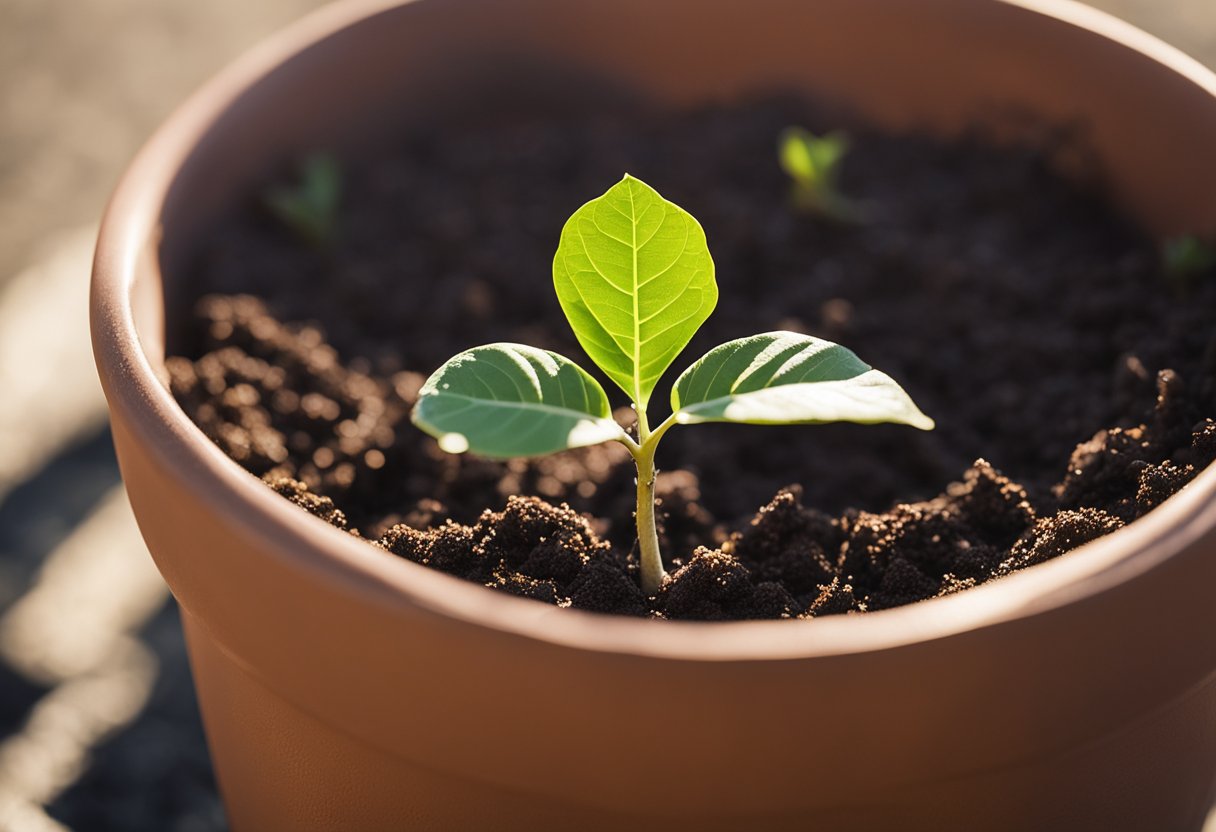
Understanding fig tree propagation is the first step in successfully growing a fig tree from a cutting. Fig trees can be propagated through cuttings taken from a mature tree during the dormant season. These cuttings can be rooted in soil or water, and once rooted, can be transplanted to a permanent location. With proper care and attention, a rooted cutting can grow into a healthy and productive fig tree.
Key Takeaways
- Understanding fig tree propagation is essential for successfully growing a fig tree from a cutting.
- Selecting a healthy cutting and preparing for propagation are crucial steps in the process.
- Rooting the cutting, caring for the rooted cutting, and transplanting to a permanent location are important steps for ensuring the growth and productivity of your fig tree.
Understanding Fig Tree Propagation
When it comes to growing a fig tree from a cutting, it’s important to understand the basics of fig tree propagation. Propagation is the process of creating new plants from existing ones, and it’s a great way to expand your garden or share your favorite plants with others.
Benefits of Propagation from Cuttings
One of the main benefits of propagating a fig tree from a cutting is that it’s a relatively easy and inexpensive way to grow a new plant. Cuttings can be taken from an existing fig tree, and with a little bit of care and attention, they can quickly grow into healthy, productive trees.
Another benefit of propagation from cuttings is that it allows you to preserve the unique characteristics of a particular fig tree. If you have a favorite tree that produces especially delicious fruit, for example, you can propagate it to create new trees that will produce the same high-quality fruit.
Best Time of Year for Cuttings
The best time of year to take cuttings from a fig tree is during the dormant season, which typically runs from late fall to early spring. During this time, the tree is not actively growing, which makes it easier to take cuttings without damaging the tree.
When taking cuttings, it’s important to choose healthy, one-year-old branches that have grown during the previous season. Look for branches that are about 1/2 to 1 cm thick, and make clean cuts just below leaf nodes (where leaves attach themselves) on each cutting about six inches long ideally with two buds per cutting.
By understanding the basics of fig tree propagation and choosing the right time of year for cuttings, you can successfully grow a fig tree from a cutting and enjoy delicious, home-grown figs for years to come.
Selecting Your Fig Cutting
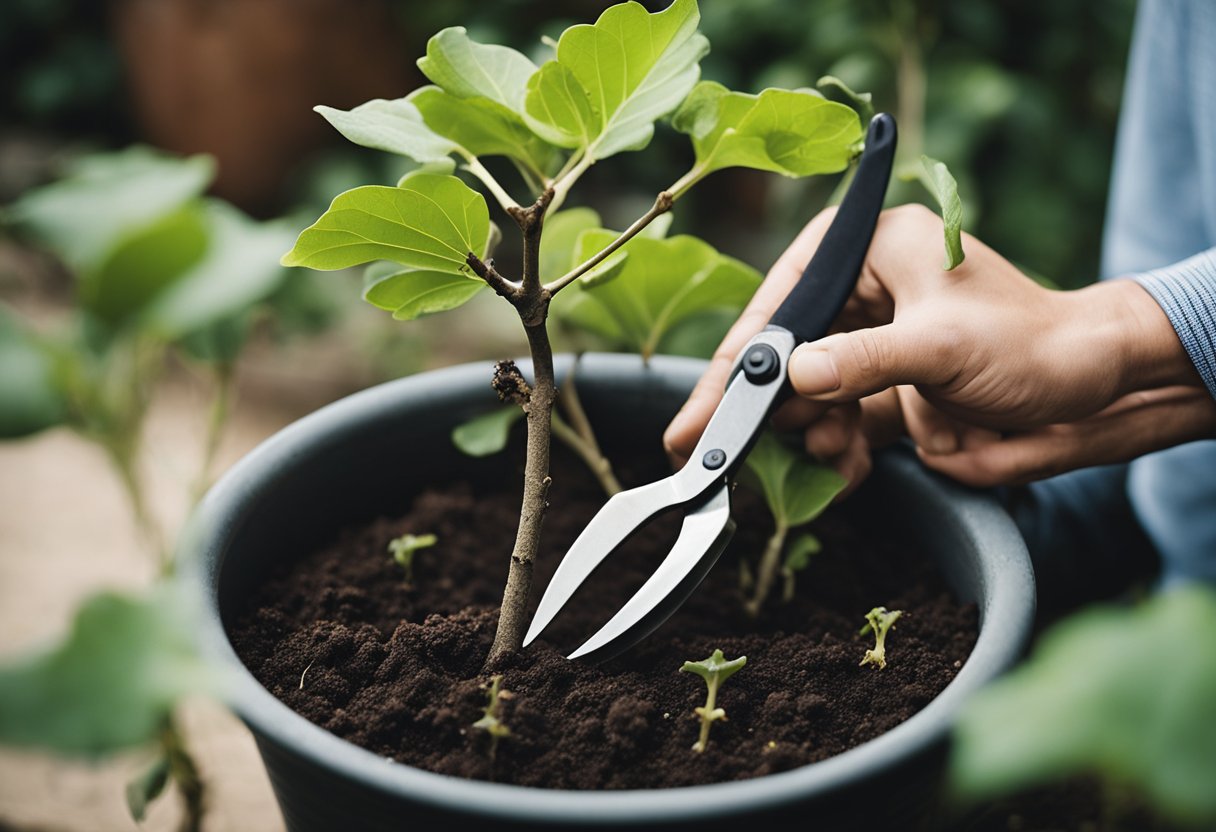
Growing a fig tree from a cutting can be a rewarding experience, but it all starts with selecting the right cutting. In this section, I will guide you through the process of choosing the best donor tree and identifying the right cutting.
Choosing Healthy Donor Trees
When selecting a donor tree, you want to choose a healthy tree that is free from disease and pests. Look for a tree that is at least two years old and has a strong, healthy stem. The leaves should be green and vibrant, and the tree should be producing fruit.
Identifying the Right Cutting
Once you have identified a healthy donor tree, it’s time to select the right cutting. Look for a branch that is at least six inches long and has two to three nodes. Nodes are the points where leaves grow from the stem. Make sure the cutting is straight and has no signs of damage or disease.
When taking the cutting, make a clean cut with a sharp pair of pruning shears. Cut the branch at an angle, about one-quarter inch below the bottom node. Remove any leaves from the bottom half of the cutting, leaving only the top two to three leaves intact.
Remember, the success of your fig tree depends on the quality of the cutting you select. Taking the time to choose a healthy donor tree and the right cutting will increase your chances of success.
Preparing for Propagation
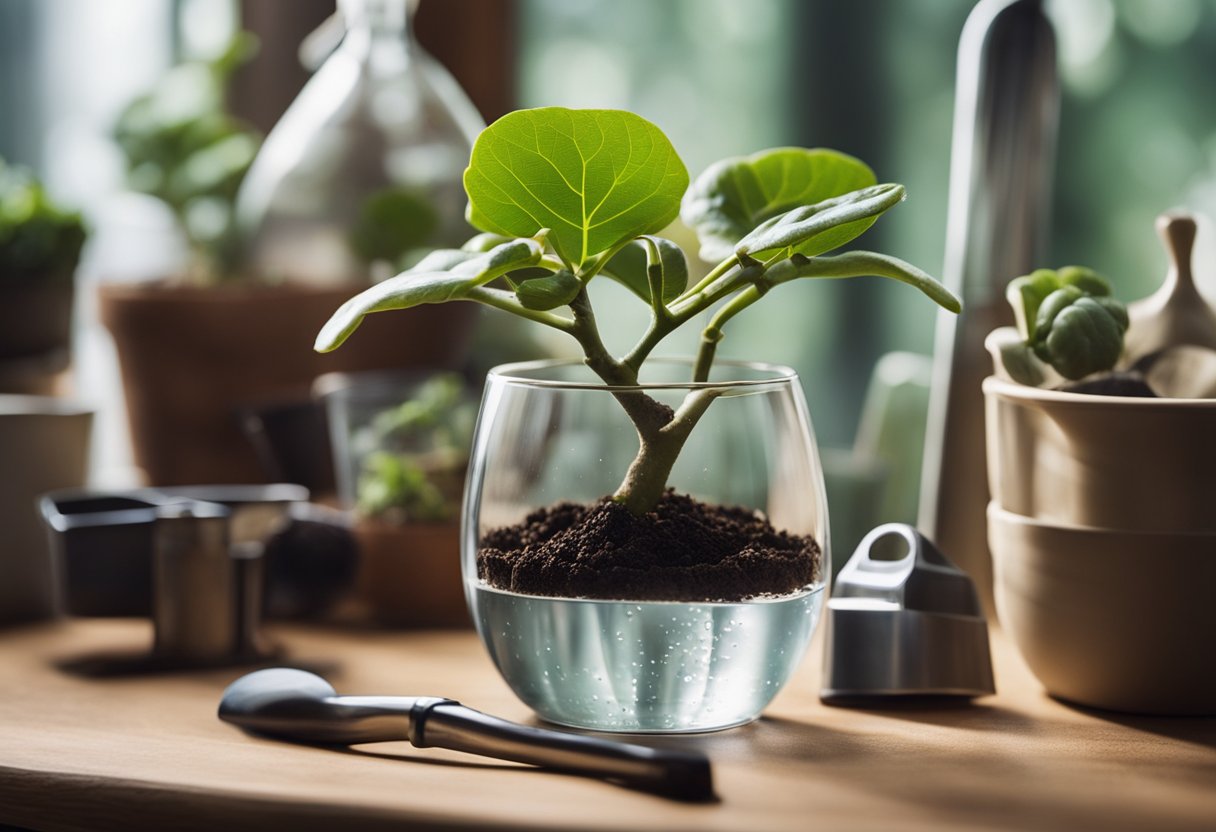
Gathering Necessary Supplies
Before propagating a fig tree from a cutting, it is important to gather the necessary supplies. Here are the supplies that I recommend:
- Pruning shears
- Rooting hormone
- Potting soil
- A container for the cutting
- A spray bottle
- Clear plastic bag
Creating the Right Environment
Creating the right environment for the fig tree cutting is crucial for its success. Here are the steps I recommend:
- Choose a healthy branch: Choose a healthy branch from the fig tree that is at least 8 inches long and has at least 3 leaves.
- Cut the branch: Using pruning shears, cut the branch at a 45-degree angle. Make sure the cut is clean and smooth.
- Apply rooting hormone: Dip the cut end of the branch into rooting hormone. This will help the branch to develop roots.
- Pot the cutting: Fill a container with potting soil. Make a hole in the soil and place the cutting in the hole. Firmly press the soil around the cutting.
- Water the cutting: Use a spray bottle to water the cutting. Make sure the soil is moist, but not waterlogged.
- Cover the cutting: Cover the container with a clear plastic bag. This will help to create a humid environment for the cutting.
- Place the cutting in a warm, bright location: Place the container in a warm location that receives bright, indirect sunlight. Avoid placing the cutting in direct sunlight.
By following these steps, you can create the perfect environment for your fig tree cutting to grow roots and thrive.
Rooting the Cutting
Preparing the Cutting
To grow a fig tree from a cutting, you need to start by selecting a healthy cutting from the mother plant. The best time to take the cutting is in the dormant season, which is typically from December to February. Look for a branch that is about 6 to 8 inches long and has at least two to three nodes. Make sure to use clean pruning shears to avoid any damage to the cutting.
Next, remove the leaves from the bottom half of the cutting. This will help the cutting to focus its energy on developing roots rather than supporting the leaves. It is also important to make a clean cut at the bottom of the cutting, just below the bottom node.
Rooting Medium and Techniques
Once you have prepared the cutting, the next step is to root it in a suitable medium. There are several rooting mediums that you can use, but a mixture of perlite and peat moss works well for fig cuttings. Mix equal parts of perlite and peat moss and moisten the mixture with water until it is evenly damp.
Dip the bottom of the cutting in rooting hormone powder to help stimulate root growth. Make a hole in the rooting medium using a pencil or a stick and insert the cutting into the hole. Firmly press the medium around the cutting to ensure good contact.
Maintaining Humidity and Temperature
After rooting the cutting, it is important to maintain a high level of humidity to prevent the cutting from drying out. You can cover the cutting with a plastic bag or a clear plastic container to create a humid environment. Make sure to keep the medium moist but not waterlogged.
The ideal temperature for rooting fig cuttings is around 78 degrees Fahrenheit. You can use a heating mat or grow lights to maintain the temperature. Keep the cutting in a bright location but out of direct sunlight.
Rooting a fig cutting is a simple process that requires a few basic steps. By following the right techniques and maintaining the right conditions, you can successfully grow a fig tree from a cutting.
Caring for the Rooted Cutting
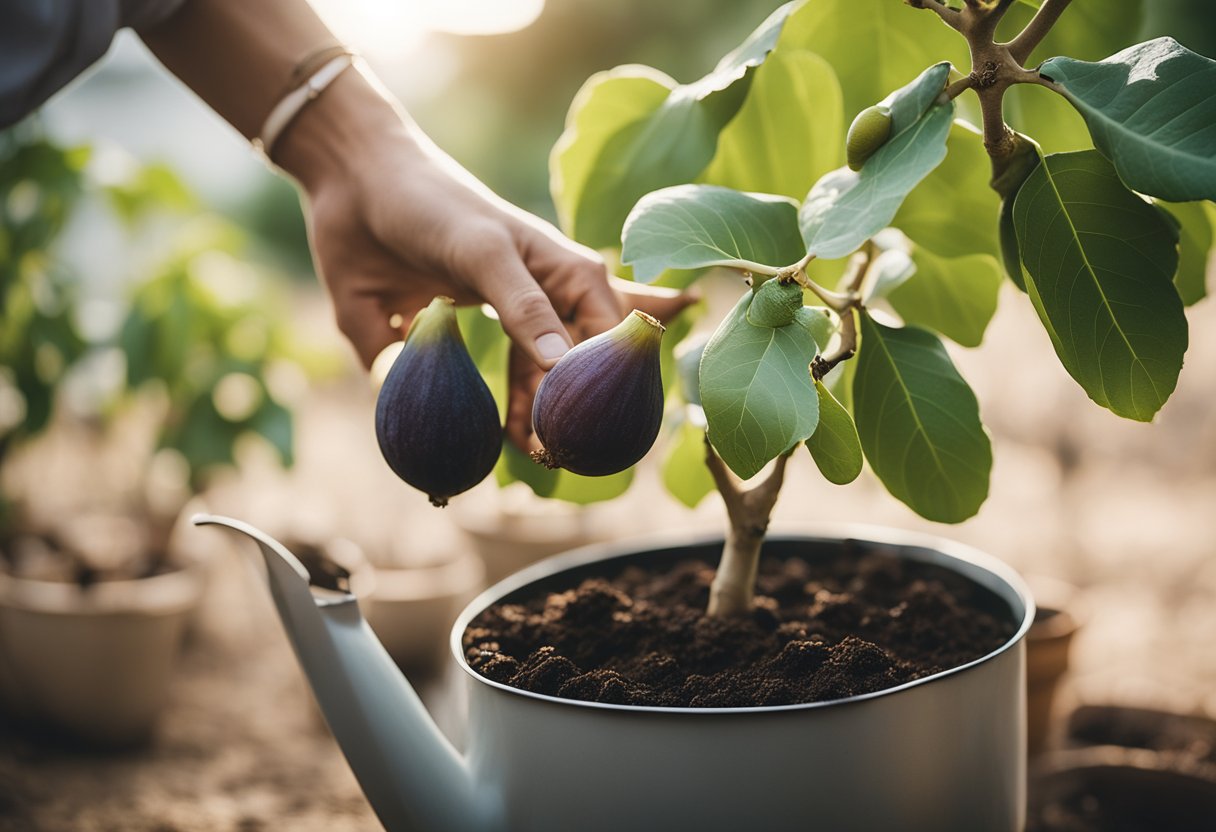
Once your fig cutting has rooted, it’s time to take good care of it to ensure its growth and development. Here are some important tips to keep in mind:
Potting and Soil Requirements
When potting your rooted fig cutting, it’s important to choose the right pot size and soil mix. A 4-inch by 9-inch treepot is recommended for the direct potting method. For the soil mix, choose a well-draining mix with materials like shredded bark, perlite, vermiculite, pro-mix, coco coir, peat moss, or even worm castings and compost. Make sure your pot has drainage holes to avoid waterlogging.
Watering and Feeding Schedule
Water your fig tree regularly, but avoid overwatering as it can lead to root rot. Check the soil moisture level regularly and water when the top inch of soil is dry. Fertilize your fig tree every 4-6 weeks during the growing season with a balanced fertilizer. Avoid fertilizing during the dormant season.
Sunlight and Location
Fig trees require full sun to thrive, so choose a location that receives at least 6-8 hours of direct sunlight per day. If you’re growing your fig tree indoors, place it near a south-facing window or under grow lights. Keep the temperature between 60-70°F (15-21°C) during the growing season and around 40-50°F (4-10°C) during the dormant season.
By following these tips, you can ensure the healthy growth and development of your fig tree from a cutting.
Transplanting to a Permanent Location

When to Transplant
Once your fig tree cutting has developed roots and has started to grow, it is time to transplant it to a permanent location. The best time to transplant a fig tree is in the early spring or late fall when the tree is dormant. This will give the tree time to establish itself before the growing season starts.
How to Transplant
Transplanting a fig tree is a delicate process that requires careful attention to detail. Here are the steps to follow when transplanting your fig tree cutting:
- Choose a location: Choose a location that has well-draining soil, receives plenty of sunlight, and is protected from strong winds. Make sure the location is large enough to accommodate the mature size of the tree.
- Dig a hole: Dig a hole that is twice as wide and deep as the root ball of the cutting. Make sure the hole is deep enough to accommodate the entire root system.
- Add compost: Add some compost to the bottom of the hole to help improve soil fertility and drainage.
- Remove the cutting: Carefully remove the cutting from its current container, being careful not to damage the roots.
- Place the cutting: Place the cutting in the hole and backfill with soil, making sure to tamp down the soil around the roots.
- Water the tree: Water the tree thoroughly to help settle the soil around the roots.
- Mulch: Add a layer of mulch around the base of the tree to help retain moisture and suppress weeds.
- Stake the tree: If necessary, stake the tree to help support it while it establishes itself.
By following these steps, you can successfully transplant your fig tree cutting to a permanent location and watch it grow into a mature, fruit-bearing tree.
Ongoing Care and Troubleshooting
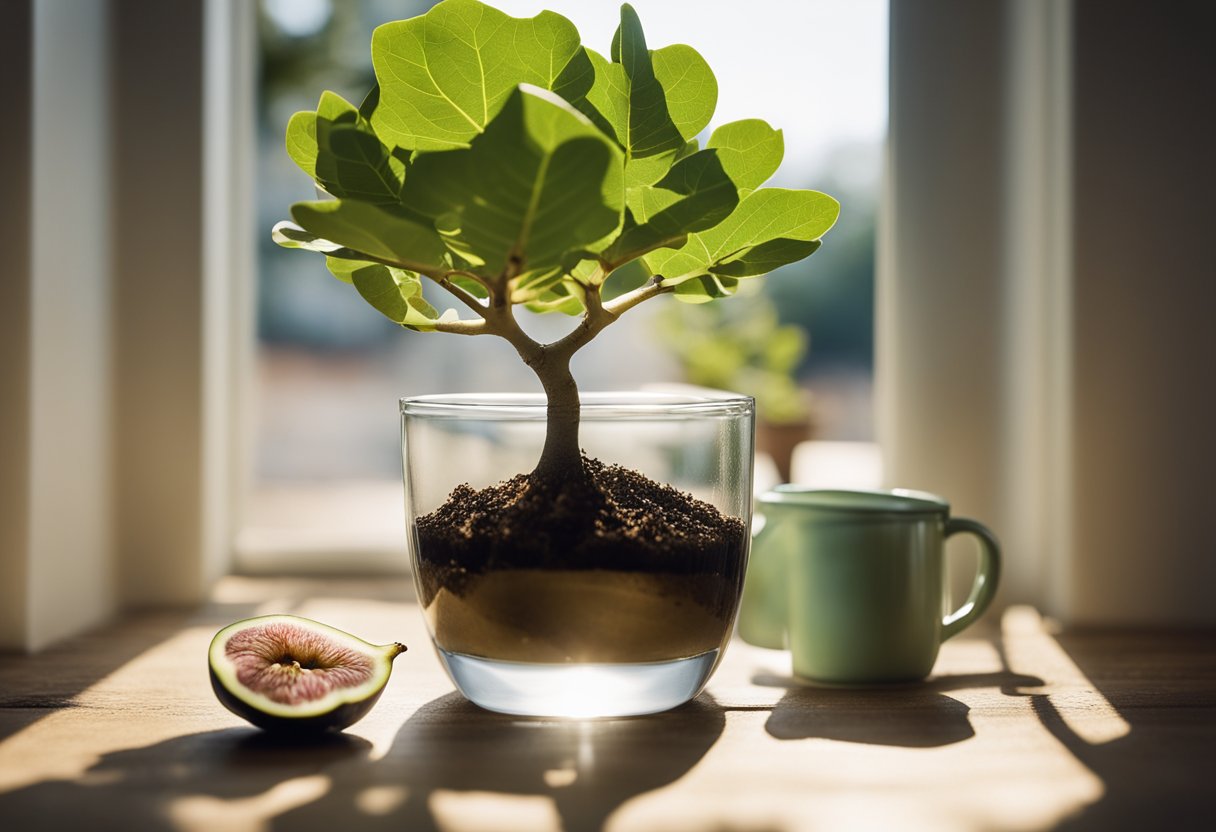
Pruning and Training
Once your fig tree has established itself, pruning is an essential part of ongoing care. Pruning should be done in late winter or early spring, before new growth appears. The goal of pruning is to remove any dead or diseased wood, as well as any branches that are crossing or rubbing against each other. Additionally, pruning can help to promote new growth and increase fruit production.
When pruning, it is important to make clean cuts with sharp shears. Avoid tearing or ripping the wood, as this can lead to further damage. After pruning, consider training your fig tree to a specific shape or form. This can be done by tying branches to a trellis or support system, or by removing unwanted shoots and suckers.
Pest and Disease Management
Fig trees are generally hardy and resistant to pests and diseases, but there are a few issues that can arise. Common pests include fig beetles, spider mites, and scale insects. These can be controlled with insecticidal soap or neem oil, applied according to the manufacturer’s instructions.
Diseases that can affect fig trees include fungal infections like leaf spot and rust, as well as bacterial infections like crown gall. To prevent these issues, make sure your fig tree has good air circulation and is not overcrowded. If you do notice signs of disease, remove any affected branches and dispose of them properly.
Seasonal Care Tips
In the spring and summer, make sure your fig tree is getting plenty of water and nutrients. Fertilize every 4-6 weeks with a balanced fertilizer, and water deeply once or twice a week, depending on weather conditions. In the fall, reduce watering and stop fertilizing to allow the tree to prepare for winter.
In colder climates, fig trees may need to be protected from frost and freezing temperatures. Consider wrapping the trunk and main branches with burlap or other insulating material, or covering the entire tree with a frost blanket. If your tree does get damaged by frost, wait until spring to prune away any dead or damaged wood.
FAQs – How to Grow a Fig Tree from a Cutting
What is the best time of year to take fig cuttings for propagation?
The best time to take fig cuttings is in late winter or early spring, before the tree has started to leaf out. At this time, the tree is dormant, and the cuttings will have a better chance of rooting successfully.
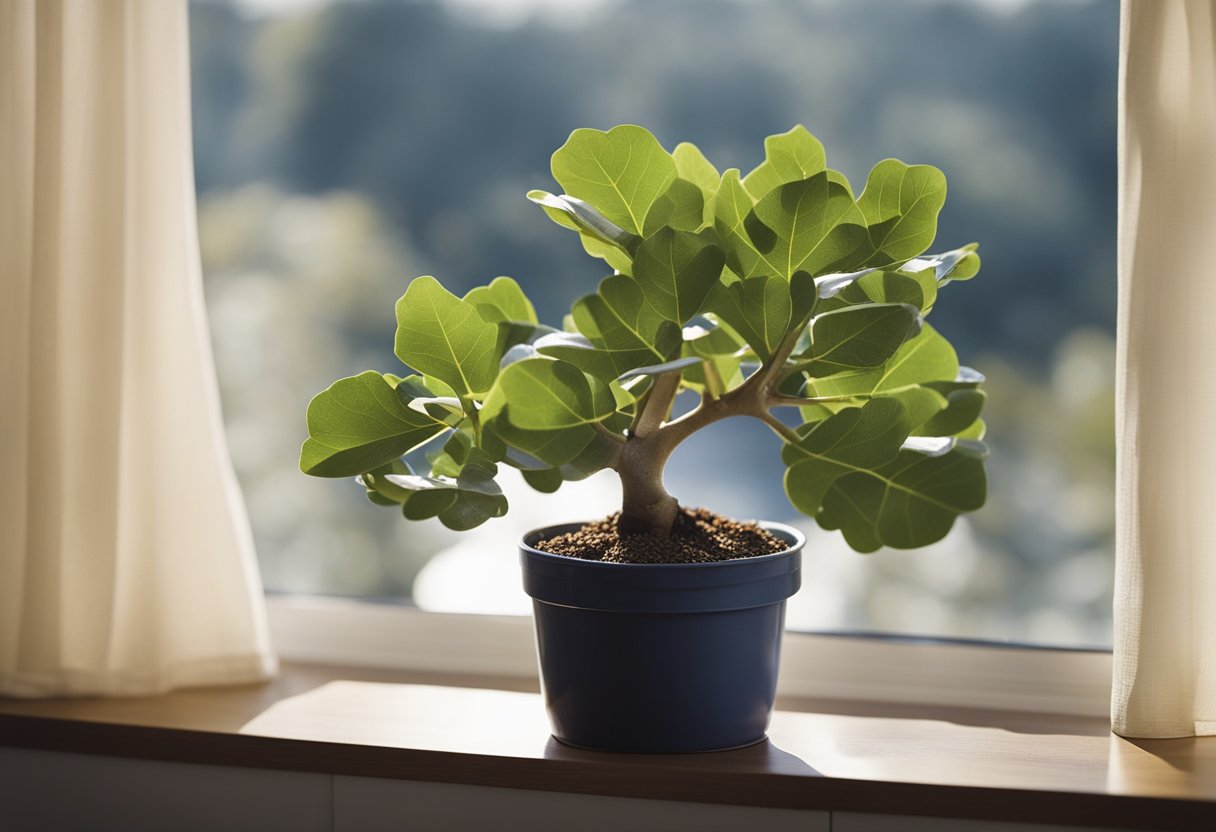
What type of soil should be used for rooting fig cuttings effectively?
A well-draining soil mix that is rich in organic matter is best for rooting fig cuttings. A mix of peat moss, perlite, and vermiculite can be used to create a soil mix that is ideal for rooting fig cuttings.
Can fig cuttings be rooted in water, and if so, how?
Yes, fig cuttings can be rooted in water. To do this, simply place the cutting in a jar of water, making sure that the bottom of the cutting is submerged. Change the water every few days to keep it fresh, and wait for roots to develop before transplanting the cutting into soil.
What are the necessary conditions for light and temperature to root fig cuttings?
Fig cuttings need bright, indirect light and a temperature of around 70 degrees Fahrenheit to root successfully. Keep the cutting in a warm, bright location, but out of direct sunlight.
How long does it take for a fig cutting to root and develop into a plant?
It can take anywhere from 4 to 6 weeks for a fig cutting to root and develop into a plant. However, it may take longer depending on the conditions in which the cutting is being grown.
What are the steps involved in propagating a fig tree from a leaf cutting?
Propagation of fig trees from leaf cuttings is not recommended, as it is not a reliable method. It is best to propagate fig trees from stem cuttings or suckers.